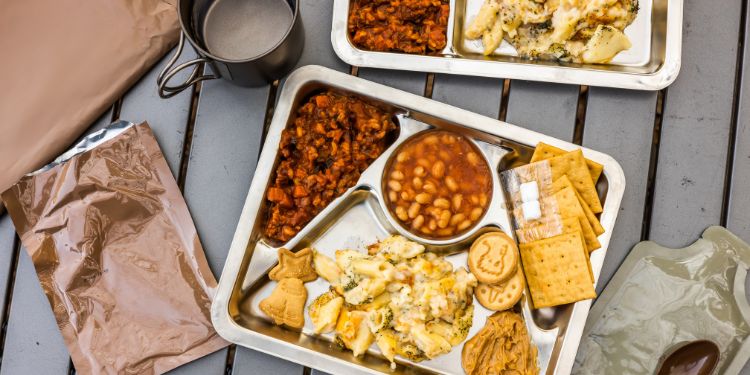For any prepper, the easiest and safest option for nutrition in a SHTF scenario is a MRE, or Meals, Ready to Eat.
But have you ever wondered what the effects on your body would be if you ate only MREs for 30 days? I did. So, I did it.
This article is all about that experience where I share with you the ins and outs, or the struggle with the outs if you know what I mean.
Why Do This?
For any prepper, research and planning is of utmost importance. The last thing you want is to be forced to figure something out during a SHTF scenario when proper research and preparation beforehand could mean the difference between life and death.
And much like many of you, my storage is filled with MREs I’ve stockpiled in preparation. So, I thought why not experiment now so I know how better to prepare for that scenario when it gets here?
The Research
I didn’t want to go into this experiment blind. After all, the military has been forcing soldiers to live off these things for decades. Since the MREs I have are the same as the military uses, I started there.
Related: Food Prepping Skills I Learned in the Military
MREs contain, on average, 1300 calories per meal. That, in itself, isn’t bad. However, there are also about 170 grams of carbs, 45 grams of protein, and 50 grams of fat. This made two things certain for me; One, I would need to drink a ton of water, and two, I would need to up my activity level.
The Beginning
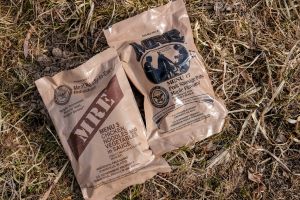 Before I get into my own experience, I do want to add that not everyone will have the same experience as I did.
Before I get into my own experience, I do want to add that not everyone will have the same experience as I did.
Current health and activity levels will play a major role in how your body responds to consistently eating MREs. Also, the military doesn’t recommend going more the 21 days on nothing but MREs. I was going 30.
I found out early on the other acronym for MRE, meals refusing to exit. I pride myself on the regularity of my bowels. When eating nothing but MREs, even after doubling my water intake, I rarely had a bowel movement that first week. It got to the point where I was in pain and contemplated giving up the experiment. Before I did that, I decided to do more research.
I found two things I was doing wrong; Even though I had doubled my water intake, I still wasn’t drinking enough, and I wasn’t spreading it out over the day. With that in mind, I was determined to finish the experiment.
It took a couple of days but once I was getting enough water throughout the day, I did start to have a little bit of regularity. (The recommendation I found was that you should drink half of your body weight in ounces. So, for a 200-pound person, that would be 100 ounces of water.)
Bubble Gut
Constipation wasn’t the only side effect, especially early on. Going into that second week, I was extremely bloated all the time. I expected this to a degree due to the amount of sodium most MREs have, but nothing could have prepared me for this. The problem was this made doing any sort of physical activity extremely uncomfortable.
This is where I must admit I may have stepped outside the bounds of my own experiment. I ended up taking some Beano. You know those commercials, right? “Take Beano and there’ll beano gas.” I took some and thankfully it helped, some.
The problem is you may not always have access to medicine in a true SHTF scenario, but I can guarantee you Beano has found its way into my bug-out bag. You can learn here what other medicines you definitely need to stockpile before an emergency situation, when access to medical care will be scarce.
Convenience
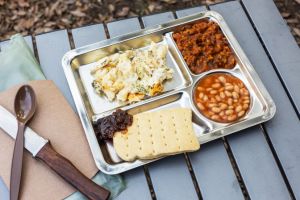 This was possibly the part of the experiment I was looking forward to the most; not having to worry about deciding what to cook.
This was possibly the part of the experiment I was looking forward to the most; not having to worry about deciding what to cook.
Then there’s the idea of not having to clean the kitchen and all that entails. I learned, though, that even convenience has its price.
There’s an episode of the Andy Griffith Show where Andy is invited to eat dinner at three or four different homes in one night. Rather than offend anyone, he decided to eat at each dinner. However, each home was eating spaghetti. By the time he got to the last dinner, just looking at the spaghetti made him want to vomit.
The downside to my MRE supply is that I didn’t have much variety. This was something I hadn’t thought of when building my MRE supply. I just figured nutrition was the most important thing, so I wanted to be sure I had food storage. By the time the fourth week rolled around, I was wanting to vomit just thinking about eating that MRE chicken alfredo.
⇒ If You Have a Food Stockpile You Need to Learn This
What I started doing was mixing and matching MRE meals. I soon found which items I liked the most and simply ate those, regardless of how many opened MREs I had. Now, I realize in a SHTF scenario, this isn’t ideal. But now that I know that variety is important, I can adjust and make my supply better in preparation.
Ending the Experiment
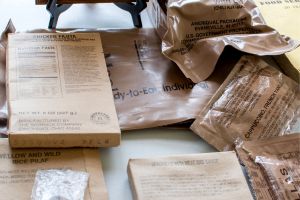 To be honest, as I went into the fourth week and the final stretch of my 30-day MRE diet, I felt relatively good. I wasn’t as regular as before, but I felt better than the first week.
To be honest, as I went into the fourth week and the final stretch of my 30-day MRE diet, I felt relatively good. I wasn’t as regular as before, but I felt better than the first week.
When day 30 came, though, I was ecstatic. I had been craving a cheeseburger and fries for the last ten days.
So, on day 31 I fulfilled my craving. And I regret it.
When I say I got sick I mean fluid coming out of both ends, hugging the toilet kind of sick, and I did not understand it at all. What I found out was why the military limits MRE intake to 21 days.
To achieve the long shelf life MREs are most famous for, the food used in them is cooked more thoroughly than a normal meal would be, and preservatives are added to prevent bacteria from growing inside the pouches.
These preservatives, though, also kill the good bacteria your gut produces. While it doesn’t kill it off completely, what happens is when you go back to normal food after prolonged usage of MREs, your gut doesn’t have enough of these good bacteria built up and you get sick.
The lessons I learned from my experience will be invaluable to me when the SHTF scenarios happen.
Because of my experiment, I now have fiber supplements and other vitamins to ensure I’m getting the proper balance of nutrition. And, of course, the Beano. I’ve also started stocking a variety of MREs to avoid the risk of burnout.
What I have also come to realize is that should the SHTF scenario last longer than a few days, I am making finding an alternative food supply a top priority.
I’ve started researching ways to preserve my own food through dehydration and canning. Perhaps you can learn from my experiment, too, and better prepare yourself and your family.
For those looking to ensure their food supply in any situation, I highly recommend checking out The Lost Superfoods. This comprehensive guide provides invaluable information on over 126 survival foods that can be preserved and stored without refrigeration for years.
It’s a great resource to help you build a stockpile of nutritious, long-lasting foods, giving you peace of mind when SHTF. Prepare now and ensure your family’s sustenance no matter what happens.
You may also like:
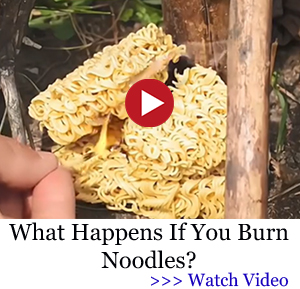 7 Amish “Powers” You Should Master Before The Next Crisis
7 Amish “Powers” You Should Master Before The Next Crisis
The ‘Superweed’ That Saved Large Communities During The Great Depression (Video)
Why Now More Than Ever You Should Prepare For the Upcoming EMP
12 Items That Are Still Good After They Go Bad
Read the full article here
